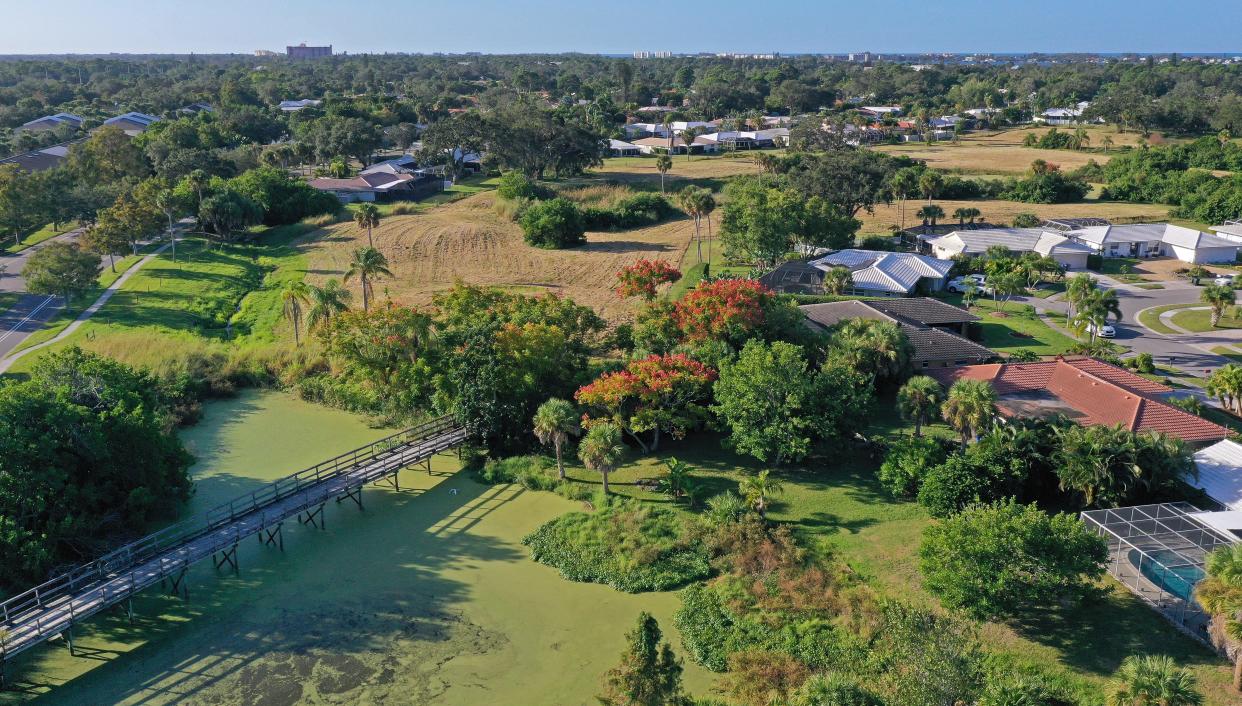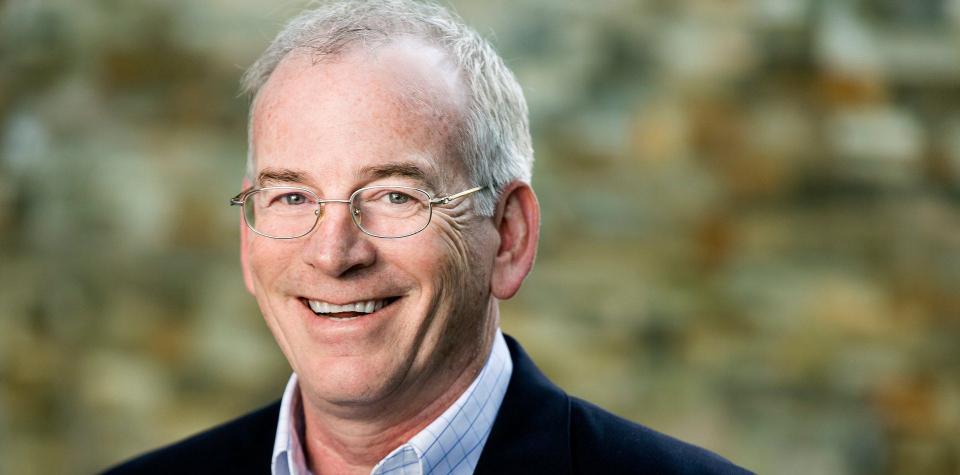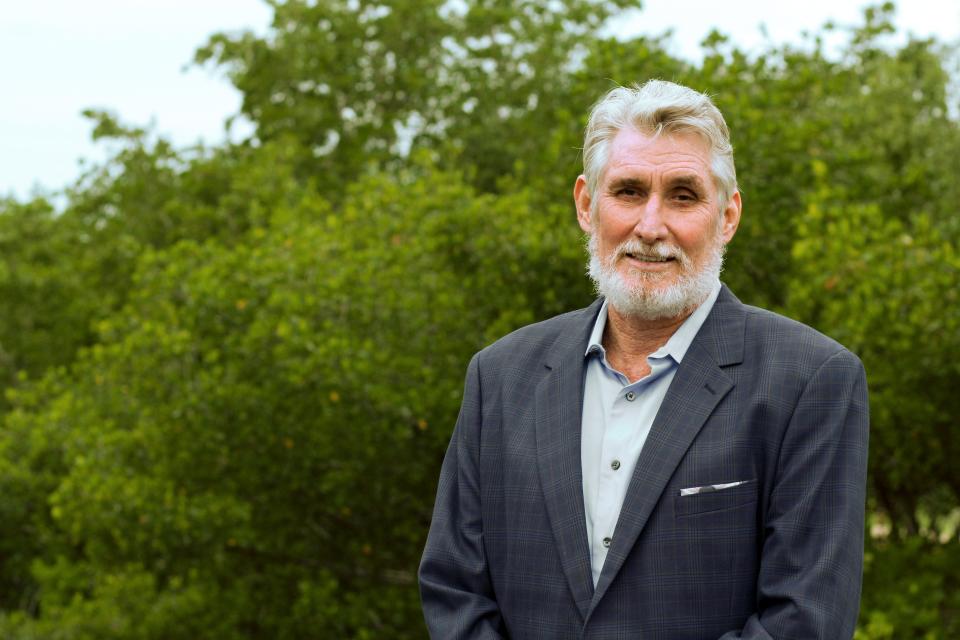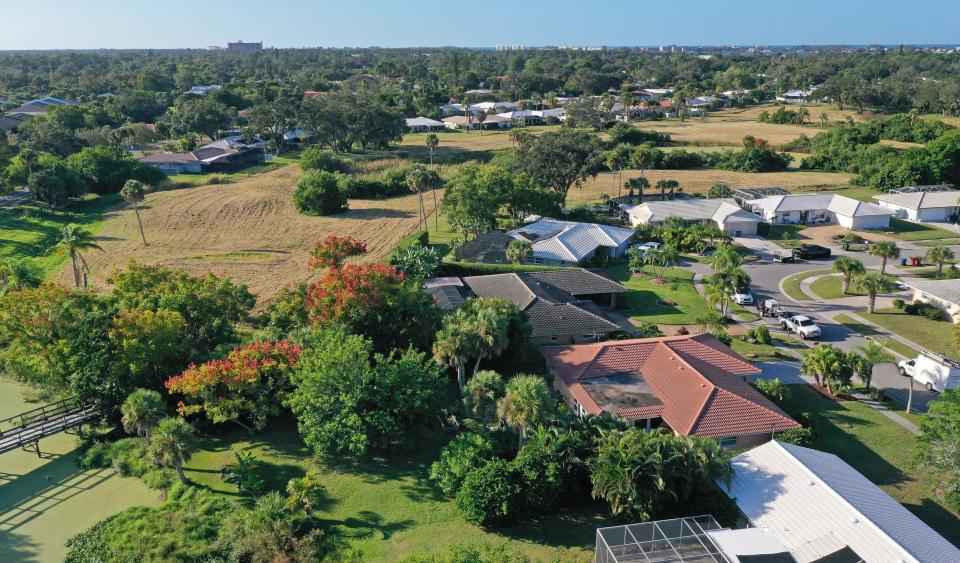Instead of new homes, Sarasota golf course land could become key to bay water quality

The former 49-acre Gulf Gate Executive Golf Course could be one of several keys to foster the continued improvement of water quality in Sarasota Bay, or a 106-home subdivision retrofitted inside one of Sarasota County’s first master-planned communities.
Environmentalists, water quality proponents and area residents — including members of the Gulf Gate Community Association — can envision the course, laid out on three sections already interspaced between existing homes, as the site of a county project that could both provide additional stormwater cleansing and help alleviate potential flooding.
"To get 49 acres in that particular area of the county …. it would be an unbelievable acquisition,” Sarasota County Commissioner Joe Neunder said at the Oct. 24 meeting where the idea of county purchase of the course was discussed.
The golf course is the largest available parcel west of Beneva Road and is less than one mile from Sarasota Bay and less than two miles from the Gulf of Mexico.
Gulf Gate is part of Neunder’s district and he has worked with members of the Gulf Gate Community Association.
David Tomasko – the new executive director of the Sarasota Bay Estuary Program – said the property offers an opportunity for a large-scale regional stormwater retrofit similar to one established to help clean up Hudson Bayou, and the anticipated impact on stormwater quality that the redevelopment of the Bobby Jones Golf Course in Sarasota should have.

The Bobby Jones project is expected to treat water runoff from eight square miles of the Phillippi Creek watershed and take “a couple of tons of nitrogen” out of Sarasota Bay.
A pound of nitrogen, Tomasko said, contributes to the growth of 300 pounds of algae.
“These large, regional stormwater retrofit projects require open land,” Tomasko said. “The potential in Gulf Gate is you have a big chunk of land and upstream there are older developments that developed before you had stormwater (retention and treatment) rules and regulations.”
An experienced developer and a willing seller
The most recent developer that owns the course — Fort Lauderdale-based 13th Floor Homes — is entitled to build a 106-home subdivision, touted as Lotus Bay on its website — but would also be open to selling the property to Sarasota County for the right price.
“Our intent since acquiring this property has always been to move forward with approved plans for the development of 106 new single-family homes,” 13th Floor spokeswoman Allie Schwartz Grant said via email. “We are excited to start development next year and welcome new residents to the community before year’s end.
“At the same time, our plans have not, and will not, affect our willingness to keep an open dialogue with the County as we continue the development process.”
Sarasota County Public Works Director Spencer Anderson told the commission at its Oct. 24 meeting that the main issue is cost.
The county has received appraisals of $4.59 million and $3.85 million on the property.
It has explored a variety of ways to fund a purchase, ranging from a special taxing district to use of sales tax money and a portion of the $201.5 million Resilient SRQ federal block grant intended for Hurricane Ian recovery.
Anderson told the board that 13th Floor is seeking “multiples” of those estimates to strike a deal.
The developer is also working with the Florida Department of Environmental Protection for a remediation plan to deal with high levels of arsenic on the property — a typical issue with golf course redevelopment.
While 13th Floor Homes has considerable experience developing older golf courses into subdivision, many of them have been considerably larger than the 49-acre site, such the former 110-acre Palm Greens course in Delray Beach, where it envisions building 436 homes.
At least two other developers — including Medallion Homes, owned by Carlos Beruff, which bought the property in 2016 for $3.98 million and pursued rezoning the property to its current residential zoning status — explored remediation costs and backed away.
“There are very high-leverage developers who have taken a shot at this site and it has not been successful,” Anderson told the commission.
Neunder noted: “As it sits today, these individuals that own the property … they’re basically holding all the cards.
“I don't know if we can do anything other than just wait and see if some time in the future, there’s a willingness to consider the sale of the property.”
A regional stormwater resource
Residents during public comment at the meeting said the golf course property could provide stormwater treatment for the Matheny Creek and Elligraw Bayou watersheds.
Sarasota County already owns a 2 ½-acre parcel within the golf course where it operates a lift station.
Tomasko noted that large scale projects — such as something Sarasota County could build on the property — is exactly what the Southwest Florida Water Management District wants to fund.
“They don’t want to do small things,” he added.
While Sarasota County would still have to account for arsenic in the soils, the rules — and remediation costs — are different than those associated with a subdivision.
Tomasko said a system devised for the Gulf Gate course could likely help treat stormwater for 1,000 acres.
Tomasko noted that existing water quality projects — including Sarasota County’s effort to bring its wastewater treatment plants to advanced treatment standards — have already led to an improvement in area waterways.
The DEP has looked at data collected by Sarasota and Manatee counties, as well as Mote Marine Laboratory & Aquarium, and determined that the water quality in several portions of Sarasota Bay have improved enough to no longer be listed as "nutrient impaired," he added.
Only 10 water bodies in the state are scheduled to come off that list, with five of them in Sarasota County – Sarasota Bay, Little Sarasota Bay, Blackburn Bay, Hudson Bayou and northern Roberts Bay near Siesta Drive.
“We’re not seeing everything getting better everywhere,” Tomaso said “We’re not seeing Lemon Bay, Charlotte Harbor, Biscayne Bay, Indian River Lagoon, Tampa Bay getting better — we’re seeing Sarasosta Bay get better and that’s not because of some weird weather phenomenon, it’s because this area has shifted towards (clean-up) projects much more quickly.
“If you don’t do big water quality (improvement) projects you’re not going to get the water quality benefit,” he added. “”Everyone talks water quality but if you don’t have the money being spent on big projects all you’re doing is talking and here’s we’re actually seeing action.”
Part of the water quality ‘Playbook’
Fostering the development of retrofit of larger scale stormwater projects such as at Bobby Jones Golf Course and what residents hope will occur at Gulf Gate is all part of the Gulf Coast Community Foundation’s Water Quality Playbook that was released online in 2021. (It can be accessed for free at https://waterqualityplaybook.org.)

Jon Thaxton, senior vice president for Community Investment at the Gulf Coast Community Foundation, has been working with the Gulf Gate residents in pursuit of preserving those 49 acres.
“In this particular case there is a remarkably compelling public interest in preserving that land,” Thaxton said. “And not just for Gulf Gate but for that entire region – including the receiving waters in Sarasota Bay.
“To have a willing seller on a piece of real estate of this size so close to Sarasota Bay is just challenging – find me another one.”
Thaxton can point out other potential stormwater retrofit sites that he has contemplated for close to three decades and — like Bobby Jones and Gulf Gate — they’re golf courses.
“If you had a magic wand and you could just create greenspace within the urban service area of Sarasota County — within urbanized Sarasota County — you would identify all of these older community golf courses as the ideal locations for greenspace, for open space,” said Thaxton, who realized that when he first saw an old Sarasota County map of existing golf courses.
“It was not done that way necessarily but the fact still remains that these small golf courses are strategically positioned throughout the county in a way that would produce optimum recreational, social and ecological value.”
As with Bobby Jones, a portion of the land can offer an opportunity for stormwater or — in the case of Gulf Gate — flood protection, and another portion used for recreational opportunities.
A hedge against the impact future development

Tomasko noted that while stormwater systems in newer development are significantly cleaner than in older communities, they are not perfect and most are not targeted to address nutrient pollution, and will ultimately impact water quality.
Retrofitting stormwater projects in older neighborhoods are a way to offset those additional nutrients.
“You need to retrofit older neighborhoods to offset the (pollution) increase that you can’t minimize with the new development,” Tomasko said. “That’s how you can have population growth without pollutant loads.
“This has the potential for a big project sometime out in the future. Big stormwater projects can help you hold the line on water quality.”
This article originally appeared on Sarasota Herald-Tribune: Gulf Gate golf course could become next area to help Sarasota Bay

